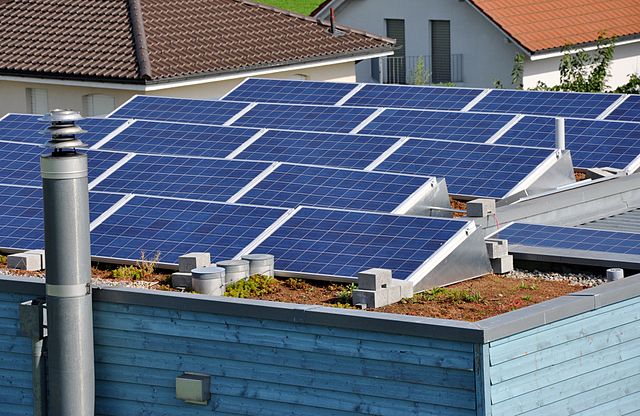Solar Roads: The Pathway to a Greener Future?
The pursuit for renewable energy has never been more aggressive since the turn of the century.
People have become more aware of the effects of rapid industrialization as experienced through climate change. Green living and practicing a zero-carbon footprint lifestyle are some ways in mitigating the impact of greenhouse gases to our environment. But it is not enough.
With the 2015 United Nations Climate Change Conference culminating in Paris, close to 200 countries signed an agreement to keep global warming temperatures below two degrees Celsius (or ideally 1.5 degrees Celsius). This historic event marked a global movement to finally end global economic dependency on fossil fuels and seek efforts to greatly reduce, if not totally eliminate, the emission of greenhouse gases.
Following this was the response of different governments in addressing environmental issues in their respective countries. Renewable energy has become a major factor economic development. Coal-fire and fossil fuels are being transitioned out, even in countries like the United Kingdom.
Scientists, business, and governments are now looking into alternative energy sources: nuclear power, hydroelectric and geothermal power, wind power, and solar power among others. And for countries like France, the US, and Netherlands, the sun shows a lot of promise.
Photovoltaics: Harnessing the power of the sun
The sun is our solar system’s powerhouse. It emits energy at 3.86 x 1026 watts. Around 1.74 x 1017 watts hit the earth. The numbers seem unimaginable but it is more than enough to power the whole planet. This means capturing the sun’s energy and translating it to electric power. This is called photovoltaics.
Photovoltaics, from the greek word photo, taps the power of the sun in order to generate electricity. Early discovery and application of this already emerged in the late 1800’s and further development picked up from the 1950s. Photovoltaics was a technology noted for its use during the Space Race where solar panels were used to power space devices and vehicles.
In everyday life, photovoltaics is best seen in our solar powered watches and calculators. At first, commercial use of solar power was very limited as silicone, an integral material for capturing solar power, can only generate small amounts of electricity. But as the decades have passed, a lot more research and development has been pouring to photovoltaics and it is no longer just about powering small devices. Solar power today is seen as a strong renewable source of energy that can power cities.
A single photovoltaic or “solar cell”, when combined with other solar cells, can make up one module of typically 12 cells depending on the voltage needed. When these modules are combined, they form an array. These are now the solar panels that we often see everywhere.
Though these is much promise in the future of photovoltaics, it has been criticized in certain aspects. For one, solar panels are expensive. Prices have gone down considerably but it cannot compete with the coal to fire power plants in terms of price. Two, solar arrays need maximum exposure from the sun. Without the sun, photovoltaic cells will not be able to generate electricity.
But despite the drawbacks, solar power is still much sought after by today’s industries. And one application of this technology is making its debut on the road.
The paths to solar roads
The French government announced last February 2016 its plans to lay down a road made up of solar panels. The “solar highway” will span 1,000 kilometers (or 621 miles) and is considered to be a first of its kind. It is estimated to provide power to 8 percent of the French population, a number close to five million. Though this is only a small number compared to France’s usage of nuclear power at 75 percent, their decision to invest in renewable energy gained some political significance.
How will this work? Unlike the typical solar panels found in households or solar farms, the ones that will be used on the road will be a triple layer of glass, solar cells, and a base plate. The textured glass will serve as the surface layer to be in contact with vehicles. French scientists assured that the textured glass has the same traction as asphalt and can withstand loaded trucks passing through. Underneath are solar arrays that will capture sunlight and the base plate will serve was the means to distribute captured sunlight into electricity.
The technology seems exciting but there are also some drawbacks to it. First, some say that the solar panels might not be able to capture enough sunlight. Though the proponents of this project claim that roads are exposed to the sun 90 percent of the time, critics cited traffic congestion as a counterargument. Another issue is the cost where solar panels are still considered to be pretty expensive.
Despite these, the French government seems enthusiastic. Panels will be strategically placed in certain areas and the project will start within the year.
Other solar initiatives
Other countries are not far from following suit as well. Germany, Japan, and the United States are also exploring the future of solar highways. One country however, has done something in 2014 even before all other countries decided to hop in. Netherlands was the first country to install a solar bike path. At 70 meters, the solar road was able to transport 300,000 bikes and mopeds while generating power good for three households.
Barely a year has passed since the Climate Change conference in Paris, yet several countries have already taken big leaps into renewable energy. Scientists see a lot of potential in solar energy and hopefully, this will be a effective pathway in building a greener future.


